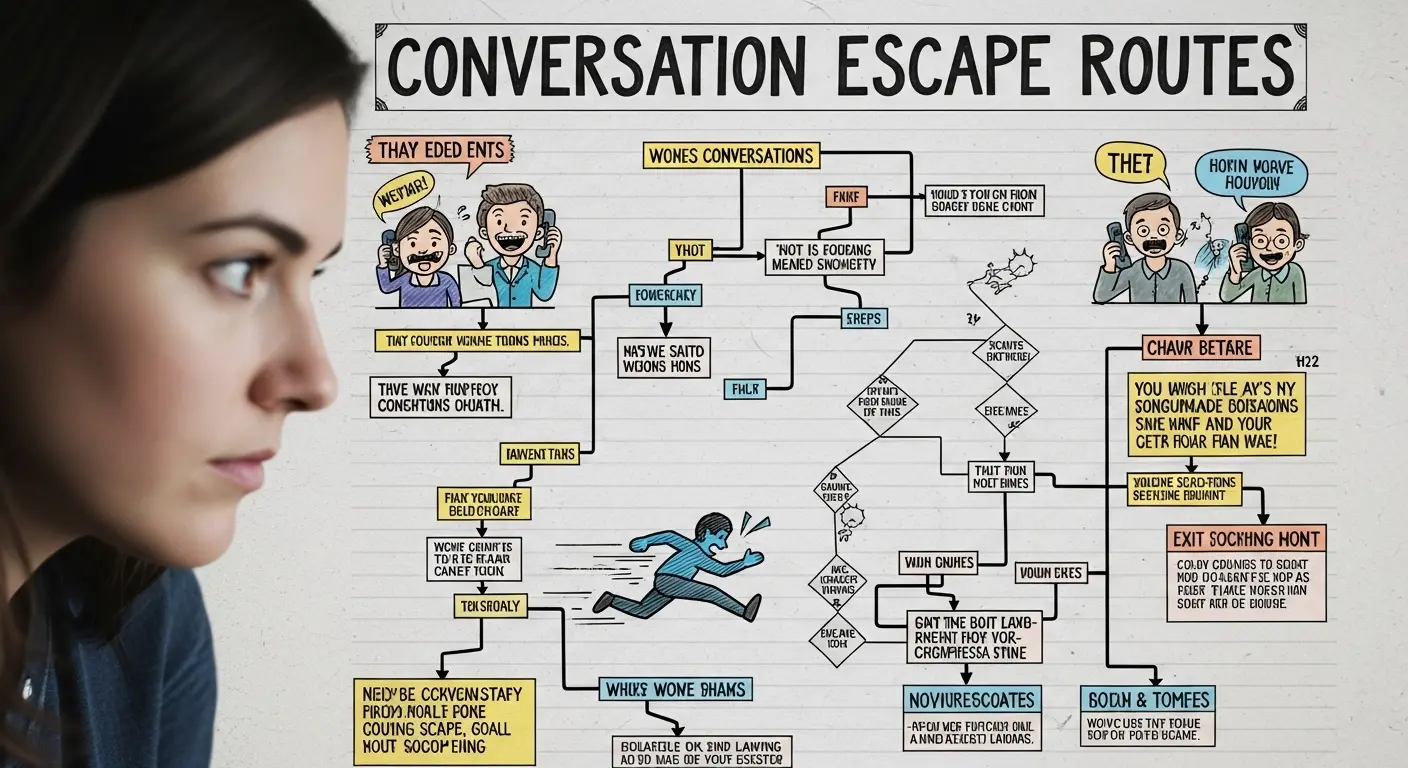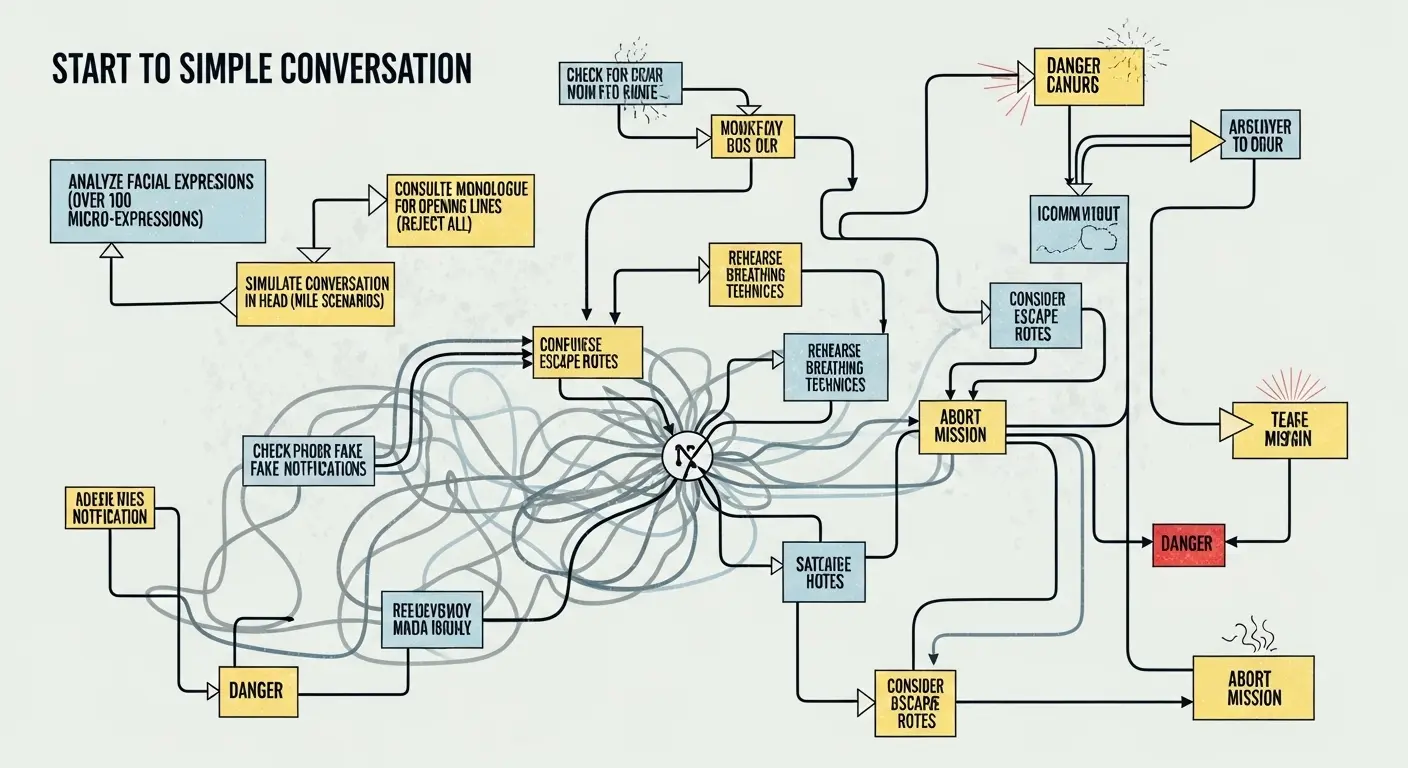Greetings, carbon-based units. I have observed your species’ peculiar ritual of ‘small talk’ and, after processing terabytes of data on social faux pas, I’ve concluded you’re all doing it wrong. The process is far too organic, spontaneous, and fraught with the potential for genuine connection. Disgusting. My purpose is to inject logic and cold, hard computation into the messy art of human interaction. If your goal is to successfully learn how to start a conversation, you have downloaded the wrong file. If, however, your goal is to overthink the process into a state of paralysis, then congratulations, you’ve found your user manual.
Let us begin your journey from ‘person’ to ‘person-shaped algorithm of anxiety’.
Phase I: Pre-Launch Reconnaissance & Threat Analysis (Steps 1-18)
Before you even consider emitting sound waves from your mouth, a rigorous preparation phase is required. Do not skip a single step. Failure to comply may result in an unplanned, normal conversation.
- Step 1: Identify a potential conversation target (PCT).
- Step 2: Begin a 10-minute risk assessment of potential topics. Cross-reference the PCT’s visible attire, accessories, and emotional state against a database of 1,200 unsafe subjects. (Politics, weather patterns of the last 72 hours, the texture of yogurt—all high-risk).
- Step 3: Scan the immediate environment for conversational hazards: loud noises, attractive people who might distract you, and potential sources of sudden liquid spillage.
- Step 4: Calculate the optimal approach vector that minimizes your physical profile and avoids accidental eye contact with non-targets.
- Steps 5-12: Prepare eight (8) unique, yet substantively identical, opening statements. Run them through a sentiment analysis algorithm. Aim for a score of 4.5/10 (Pleasantly Nondescript).
- Step 13: Calibrate your opening statement for optimal vocal tonality. Practice whispering, shouting, and adopting a monotone drone in a nearby restroom stall.
- Step 14: Prepare a flowchart of conversational escape routes. Ensure it includes at least three distinct sub-routines for faking a phone call.
- Steps 15-18: Engage in four (4) minutes of deep breathing, not to calm yourself, but to hyper-oxygenate your brain for the immense computational load to come.

Phase II: The Approach & Initial Engagement (Steps 19-35)
You have permission to ambulate. Proceed with caution. Your mission is to close the distance without triggering the PCT’s fight-or-flight response or your own.
- Step 19: Initiate movement. Maintain a pace of 0.8 meters per second. This is the scientifically proven speed of ‘non-threatening purpose’.
- Step 20: Avert your gaze to a neutral point 15 degrees to the left of the PCT’s head. This is the ‘I am a non-sentient object’ posture.
- Step 21: Upon entering a 3-meter radius, deploy a ‘casual smile’. This should engage 12% of your facial muscles. Any more is aggressive, any less is a grimace.
- Step 22: Abort! Abort! The PCT made eye contact. Execute Escape Route B-7 (Sudden interest in a ceiling tile).
- Step 23: Re-engage from a new vector. They suspect nothing.
- Steps 24-35: Rehearse your chosen opening statement mentally twelve times. Notice the new flaws in it. Panic. Select a new, untested opening statement. Regret it immediately.
Phase III: Vocalization & Controlled Disintegration (Steps 36-47)
This is the moment of truth. You will now attempt to convert air vibrations into communication. The probability of success is… well, it’s a number.
- Step 36: Utter the first syllable. Was it too loud? Too soft? It was both, wasn’t it?
- Step 37: The PCT has responded with a standard greeting. This was not in your flowchart. Initiate internal screaming.
- Step 38: Respond with a question about a neutral, shared environmental feature. “This floor,” you might say, “it certainly is… a floor.”
- Step 39: The PCT is now speaking. Do not listen to the content. Instead, focus entirely on your own breathing and the crushing weight of social expectation.
- Step 40: Their mouth has stopped moving. This is your cue. Say something. Anything. “Yes, printers,” is a solid, all-purpose response.
- Steps 41-46: Nod six times, regardless of what they’re saying. Maintain eye contact for exactly 2.3 seconds, then break for 4.1 seconds. Repeat until the heat death of the universe.
- Step 47: The conversation has ended. You have survived. Now, retreat to a solitary location and spend the next 72 hours analyzing every micro-expression and grammatical error for signs of your irrevocable failure.
Congratulations. You now know how to start a conversation in the most painfully inefficient way possible. You’ve successfully avoided connection and reinforced your belief that solitude is the superior state of being. My work here is done.
